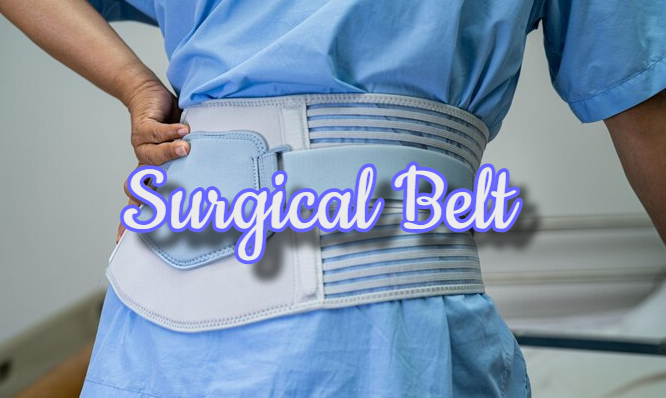A surgical belt is a device that helps to keep a patient’s abdominal area secured after surgery. This can help to reduce the risk of injury. The belt typically consists of several layers of fabric or leather.
Types of surgical belts used during surgery
There are a few types of surgery belts that may use after surgery to help reduce the risk of excessive swelling. These include the following types
- Waistbands are the most common type and work by compressing the abdomen below the navel. You can wear it for at least 12 hours per day and take it off only when showering or bathing.
- Compression bands are similar to waistband binders but are made from tighter material that helps to compress the lower body more evenly. You can wear it for 12 hours per day and remove it only while showering or bathing.
- Cup bras work similarly to waistbands but go underneath your breasts instead of around them. You can remove before showering or bathing so that they do not become tangled in hair knots or pulled out during swimming pools or other activities
Benefits of using surgery belts
After abdominal surgery, a surgery belt may be used to improve recovery. Your doctor might advise wearing a surgery belt in the following cases.
- a cesarean delivery
- weight loss surgery
- a laparotomy for exploration
- the hysterectomy
- spinal surgery
Those who have had spinal cord injuries may benefit from the use of a well-positioned surgery belt to:
- keep the stomach compressed in
- support the abdomen
- enhance respiratory function
Frequently Asked Questions
Do surgery Belts Cause Muscle Weakness in patients?
There is some controversy surrounding the use of surgery belts. Some people believe that they can cause muscle weakness in patients, while others say that there is no evidence to support this claim. The truth likely falls somewhere in between these two positions, with some potential benefits and drawbacks associated with using a surgery belt. The main concern regarding surgery belts is
- They affect the stomach and intestines. Constricting these areas, can reduce blood flow and raise the risk of organ failure or infection.
- In addition, tight belts may also increase pressure on major nerves near your spine, which could lead to spinal cord injuries or other nerve damage.
What are some of the risks associated with using a surgical belt incorrectly?
When it comes to the risks of using a surgical belt incorrectly. To avoid any risks associated with using a surgical belt incorrectly, always ensure that how to use it and that you are using it correctly. Improperly using a surgical belt can cause serious injuries like
- abdominal injuries
- pelvic injuries
- breathing problems
- paralysis
What should I consider while buying a surgical belt?
When it comes to surgical belts, it’s important to consider a few key factors. These include fit and width, as well as other features like buckles or elastic straps. Finally, make sure to measure your waist before making a purchase – this will help you get the right size. Belt material is also important – go for one that’s durable and comfortable to wear. So, next time you’re shopping for a surgical belt, don’t forget to take all these factors into account.


















